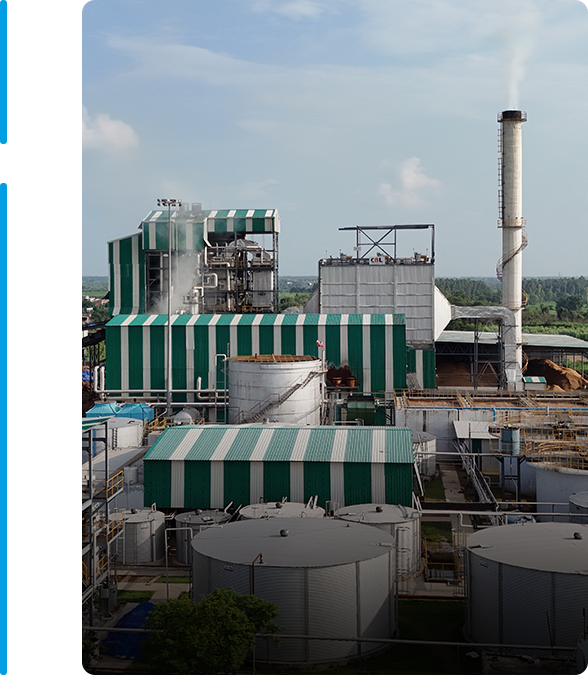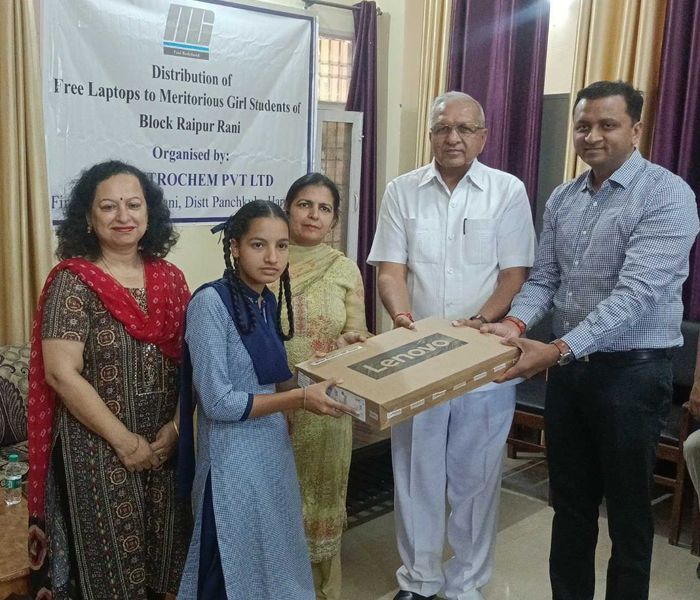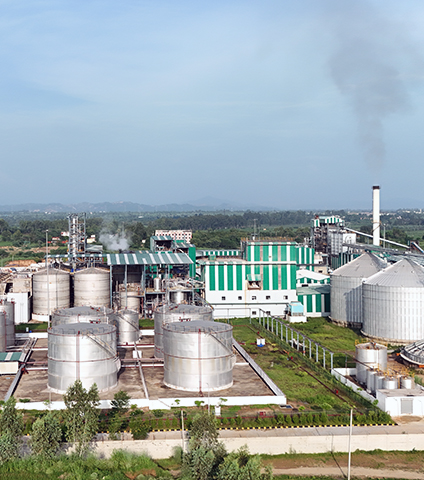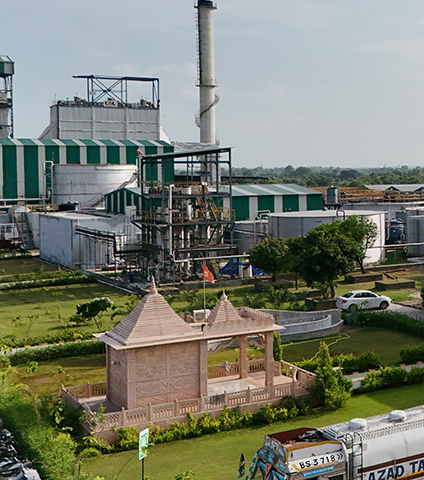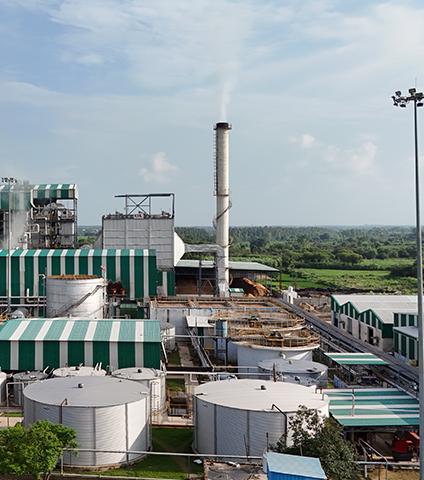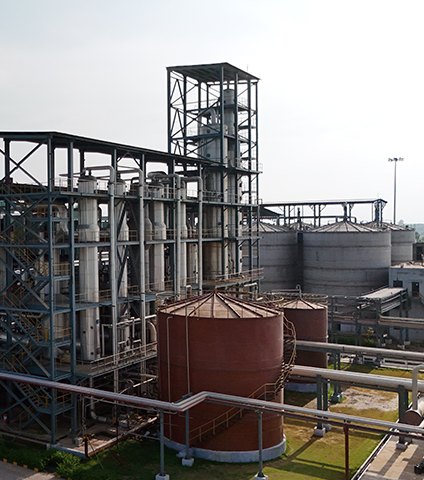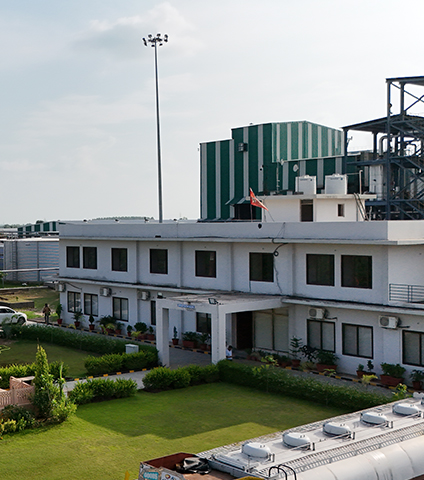Slurry Preparation / Liquefaction
Grain flour and process water are fed at a controlled rate to Slurry Tank. Mixed slurry is taken to the Initial Liquefaction tank, where the additional quantity of water is added as per requirement. Viscosity reduction Enzyme and stabilizing chemicals and a portion of the liquefying enzyme are also added at this stage. The slurry is then “cooked” in the jet cooker. The slurry is continuously pumped to a steam jet cooker, where high-pressure steam at 3.5 bar (g) rapidly raises the slurry temperature. The mixture of slurry and steam is then passed through the Retention loop. The retention loop has several “U” bends in series with sufficient capacity to provide the desired retention time at a given flow rate. The cooked mash is discharged to a Flash Tank.
The cooking process, accomplished in the above manner, converts the slurry into a hydrated, sterilized suspension and is, therefore, susceptible to enzyme attack for liquefaction.
The gelatinized mash from the Flash Tank is liquefied in the initial and final liquefaction tank, where liquefying enzyme (alpha-amylase) is added. The liquefied mash is cooled in Mash Cooler and transferred to the Saccharification cum fermentation section. This process initiates the formation of sugar. The gelatinized mash from the Flash Tank is liquefied in the Final Liquefaction Tank, where liquefying enzyme (alpha-amylase) is added. The liquefied mash is cooled in Mash Cooler and transferred to the Saccharification cum Fermentation section.



